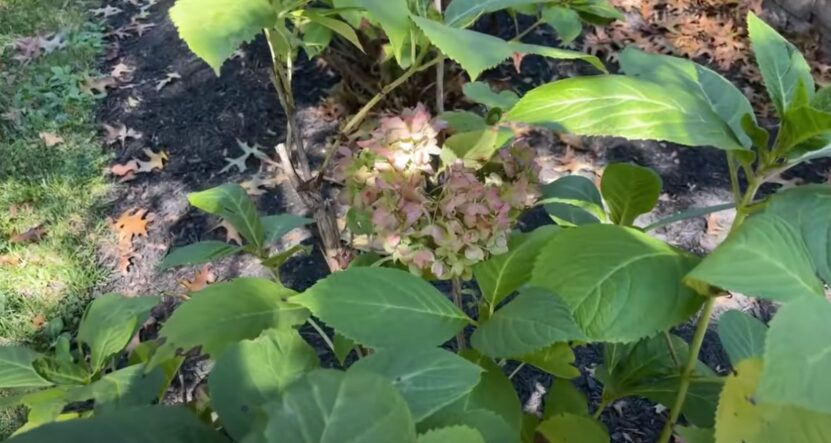The Basic Principles Of Hydrangea Leaves Turning Yellow
Wiki Article
More About Hydrangea Leaves Turning Yellow
Table of ContentsThe smart Trick of Hydrangea Leaves Turning Yellow That Nobody is Talking AboutThe 7-Second Trick For Hydrangea Leaves Turning YellowFascination About Hydrangea Leaves Turning YellowSome Known Factual Statements About Hydrangea Leaves Turning Yellow
One opportunity is that the plant is not obtaining adequate sunlight. During the cold weather, the days are shorter, and the sunlight is not as intense, so ensure to place your Hydrangea in an area where it will obtain at the very least 6 hours of sunlight daily. An additional reason for Hydrangea yellow fallen leaves in wintertime can be excessive water.Ultimately, the fallen leaves could be turning yellow due to temperature stress and anxiety. Hydrangeas like cooler temperatures, so if the plant remains in an area that gets too hot or as well cold, the fallen leaves will turn yellow. If you believe temperature level anxiety might be the problem, attempt moving your Hydrangea to a different location or protecting it from the components with a burlap wrap.
New growth will be observed in very early spring, when you'll observe green foliage sprouting from stems that might have appeared dead. Nevertheless, if your fallen leaves are transforming brownish in spring or summer, there are likely other aspects at play. The exact factors depend upon the variety and their expanding conditions, however generally, brown hydrangea fallen leaves suggest dehydration and wilting in the heat
In the spring when the mercury stays relatively low, they'll do fine. When things warm up over the summer nevertheless, time spent in the very early mid-day rays can create unknown damage.: Expand your hydrangeas in a place where they'll get sunshine in the mornings or nights, yet not during the peak hours.
10 Easy Facts About Hydrangea Leaves Turning Yellow Explained
Wilting is created by lack of wetness, suggesting there are a couple of excellent tricks to utilize to avoid this from occurring. Provide your hydrangeas a healthy glug of water every couple of days when the temperature levels are climbing up high, and treat the soil to far better retain dampness. After sprinkling, a dab of mulch around the base of each plant need to help with this by maintaining dampness in the dirt.This disrupts fungis spores from clearing up. "The Botrytis fungus prospers in great and wet conditions, so avoid bathing the whole plant when watering and just water at the origins," shares Roy Nicol, a Master Gardener - Hydrangea Leaves Turning Yellow. If you have actually missed the opportunity for avoidance and are taking care of an infection you must remove all dead or seriously contaminated leaves from the plant and destroy them to avoid further spread
As a basic general rule, we suggest removing leaves when they are 50% brownish or greater. While browning triggered by any kind of factor can not be turned around, taking the rehabilitative action described above will encourage the plant to expand brand-new fallen leaves so the best site harmed leaves either drop off naturally or can be removed by the gardener.
Hydrangeas must be watered just when the top couple of inches of dirt are completely dry, and must be offered an extensive soaking each time. Underwatered hydrangeas are most likely to have yellow, wilting, and drooping fallen leaves. Raise the frequency and amount of sprinkling for your bush to assist fix this problem. Hydrangeas favor fairly wet (but not soggy) dirt, so provide the origins an excellent saturating and permit water to be soaked up right into the soil before using extra.
The 20-Second Trick For Hydrangea Leaves Turning Yellow
The means you take care of hydrangea leaves transforming yellow depends on the essential additional reading concern creating the yellow leaves. This can be hard to figure out, once you do you will certainly have the ability to readjust your plant treatment accordingly to deal with the trouble. As pointed out in the past, a common issue with hydrangeas is nutrient deficiencies.During the optimal expanding period, you must water at a price of about 1 inch per week. If you are fretted about not effectively sprinkling your hydrangeas, there are a number of things you can do. Including compost to the base of the plants over the root zone help to manage the temperature level around the shrub and preserve water in the dirt.

If it is too extreme, some plants will certainly never recover from transplant shock and will continue to decline till they die. Lessen transplant shock by including as numerous origins as feasible when excavating up your plant to relocate. Be certain to offer more water than common in the weeks complying with planting to help your plant recuperate and expand brand-new origins.
Fascination About Hydrangea Leaves Turning Yellow
To prevent spreading fungal conditions, make sure to thouroughly clean and disinfect any kind of trimming devices prior to and after usage. Lastly, you can attempt to flush the origins with water to eliminate excess fertlizer.
If you don't water your hydrangea plant for even more than a week, the fallen leaves will certainly begin turning yellow. Fungal conditions that assault the plants often tend to reveal indicators on the roots and the leaves of the plant.
Origin rot happens when pathogens take up the origin cells as hosts and stop the cell from working. If not dealt with, this condition can ultimately lead to the plant dying. Fallen best site leave place is one more fungal condition that can target hydrangea. It causes the fallen leaves turning yellow and the appearance of brown and purple places on the fallen leaves.
Report this wiki page